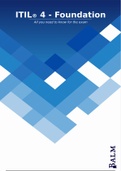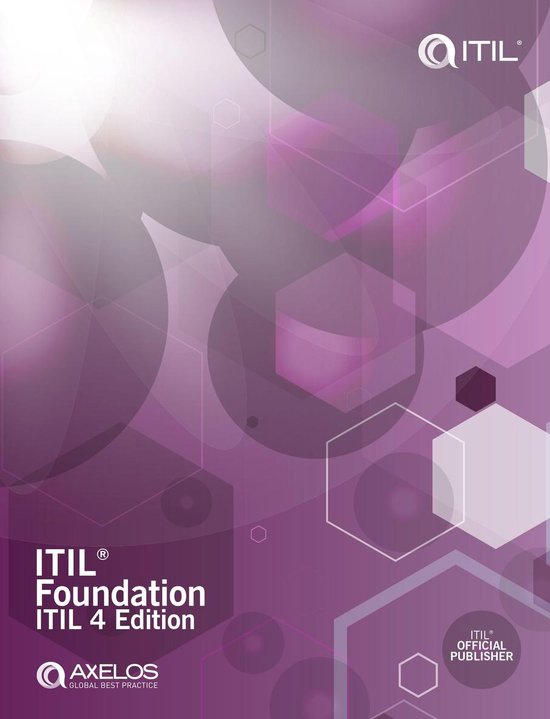™
Written by Patrick J. Balm
,Introduction
With ITIL 4, ITIL no longer stands for Information Technology Infrastructure Library, but the ITIL name
has become a standard for IT service management (ITSM). ITIL is a best practiceⁱ guidance for service
management.
ITIL 4 brings ITIL up-to-date by embracing multiple new ways of working, such as Lean, Agile, and DevOps.
One of the key values that keeps coming back in this version is value and co-creation.
The key components of the ITIL 4 framework are the key concepts of service management, the service value systemⁱ (SVS) and the
four dimensions model.
! That being said, most questions in the exam, as far as I noticed, are about the practices.
There are 34 practices in total, and the origins of the practices are as follows:
General management practices (4/14) have been adopted and adapted for service management from general business
management domains.
Service management practices (10/17) have been developed in service management and ITSM industries.
Technical management practices (1/3) have been adapted from technology management domains for service management
purposes by expanding or shifting their focus from technology solutions to IT services.
As you can read above, not every practice is needed for the ITIL 4 foundation exam. Only 15 management practices are needed.
You can exclude the following practices;
Service management practices
Availability management
Capacity and performance management
Service continuity management
Service catalogue management
Service design
Business analysis
Service validation and testing
Technical management practices
Infrastructure and platform management
Software development and management
General management practices
Knowledge management
Risk management
Service financial management
Portfolio management
Strategy management
Measurement and reporting
Organizational change management
Architecture management
Project management
Organizational change management
Workforce and talent management
Every word marked with ⁱ is a definition, needed to know for the exam.
Written by Patrick J. Balm
1
, The key concepts of service management
This part explains some of the most important concepts of service management, most of which can also be found in the definitions
list on page 22 ;
Organizationsⁱ
The purpose of an organization is to create value for stakeholders.
Service providersⁱ
When provisioning services, an organization takes on the role of the service provider. The provider can be external to the consumer’s
organization, or they can both be part of the same organization.
Service providers present their services to consumers in the form of service offeringsⁱ, which describe one or more services based on
one or more products.
Service consumersⁱ
When receiving services, an organization takes on the role of the service consumer. Service consumer is a generic role that is used to
simplify the definition and description of the structure of service relationships. In practice, there are more specific roles involved in
service consumption, such as customersⁱ, usersⁱ, and sponsorsⁱ.
Other stakeholdersⁱ
Beyond the consumer and provider roles, there are usually many other stakeholders that are important to value creation. Examples
include individual employees of the provider organization, partners and suppliers, investors and shareholders, government
organizations such as regulators, and social groups.
Productsⁱ and servicesⁱ
The services that an organization provides are bases on one or more of its products. Organizations own or have access to a variety of
resources, including people, information and technology, value streams and processes, and partners and suppliers. Products are
configurations of these resouces, created by the organization, that will potentially be valuable for its customers.
Service relationshipsⁱ
Service relationships are established between two or more organizations to co-create value. In a service relationship, organizations
will take on the roles of service provider or service consumers.
Every word marked with ⁱ is a definition, needed to know for the exam.
Written by Patrick J. Balm
2





